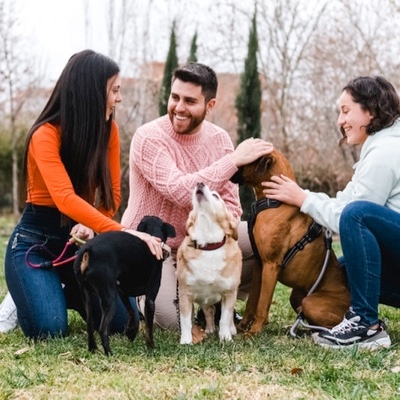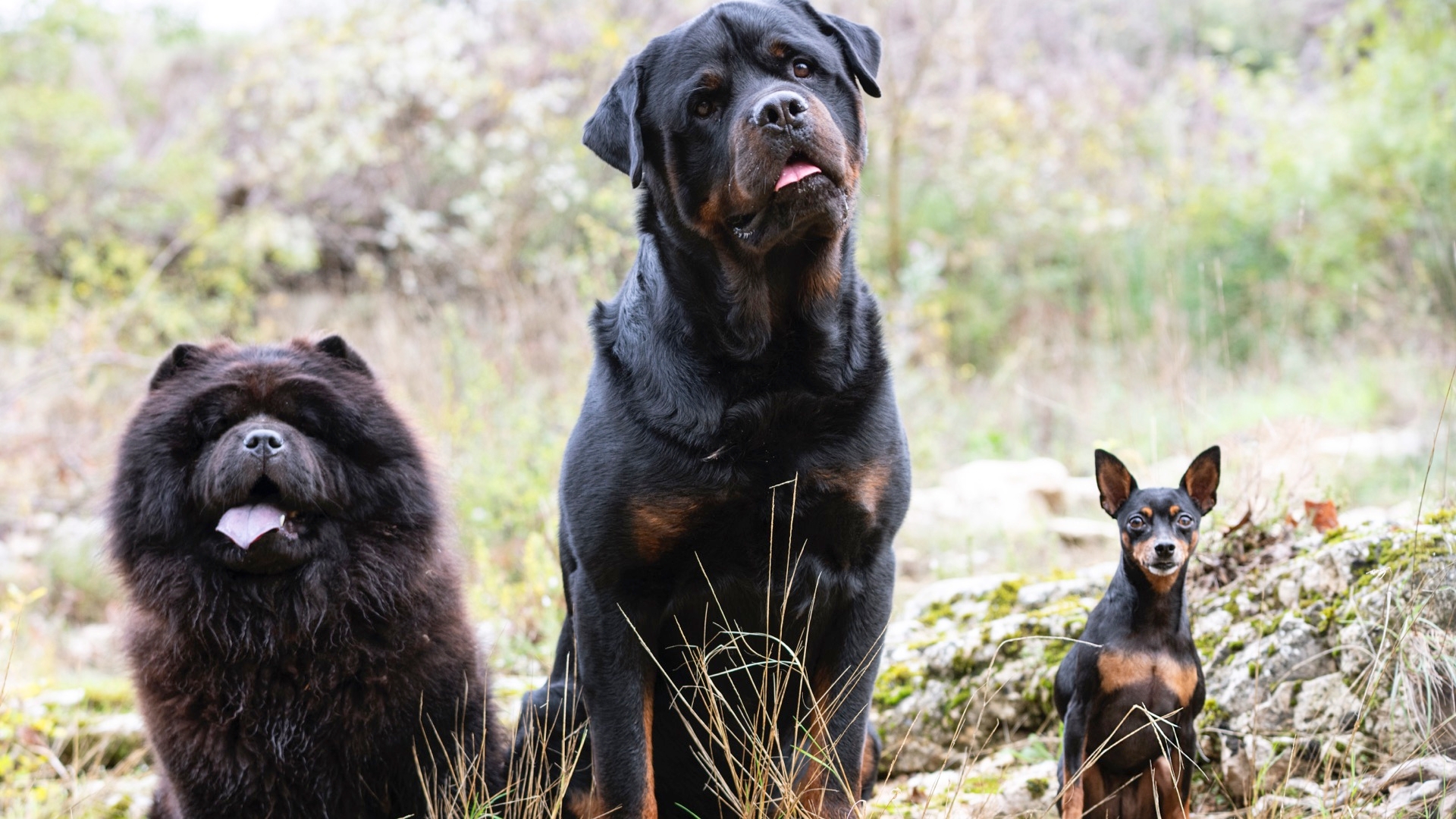Small Dogs, Big Dogs:
What's Safe?
Summary:
The dogs of today have been bred by people into hundreds of different breeds that come in a wide range of sizes, from toy dogs that weigh a few pounds to large dogs who top the scales at over 100 pounds. This disparity in dog sizes is very different from what nature would have created — that is, extra small sizes are not found in the wild. The result is that people with pet dogs need to be aware of some safety issues.


By Sherry Woodard
The dogs of today have been bred by people into hundreds of different breeds that come in a wide range of sizes, from toy dogs that weigh a few pounds to large dogs who top the scales at over 100 pounds. This disparity in dog sizes is very different from what nature would have created — that is, extra small sizes are not found in the wild. The result is that people with pet dogs need to be aware of some safety issues. You may not see your friendly 50-pound dog as large or dangerous, but a mid-size dog with an easygoing temperament can cause injury to a tiny toy dog even when trying to play. Some dogs have a strong chase drive (which is normal behavior) that instinctively causes them to want to chase and catch moving objects. Even if they’re not bent on killing, they can hurt or even kill much smaller dogs if they catch them. Other dogs have a strong prey drive that motivates them to shake, kill and eat small animals. Like the chase drive, this instinct is a natural behavior inherited from the need to hunt to survive.
On the other end of the size spectrum, some toy dogs try to play with much larger animals, or they may be aggressive toward them. We find it amusing when a small dog stands up ferociously to a big dog, but it’s actually an inappropriate greeting that could endanger the small dog. Little dogs often lack proper social skills with other animals and people because of our human tendency to act as their protectors. Our instinct is to pro- tect small dogs, so we hold them in our arms above the other dogs, and pick them up all the time, so they never learn proper greetings.
Of course, we do need to protect them. Whenever dogs are off lead, we should super- vise them closely. For safety, small dogs can be kept on a loose lead and be picked up only when necessary. If you see a bigger dog (more than 50 percent larger than another dog) who is staring, stalking or charging, use your voice to slow or stop the dog. Some dogs are fine with all dogs of a similar size, but they will react negatively if a small dog passes by. Know your own dog’s tendencies. Some triggers for dogs with strong chase or prey drive are:
- Small dog showing fear and running away
- Small dog running off lead, even if he appears confident or is playing
- Small dog yelping or barking
No matter what size dogs we live with, let’s try to be aware that size matters, so all dogs can be kept safe and trouble-free.
Sherry Woodard is the animal behavior consultant at Best Friends. She develops resources and provides consulting services nationally to help achieve Best Friends' No More Homeless Pets mission.


